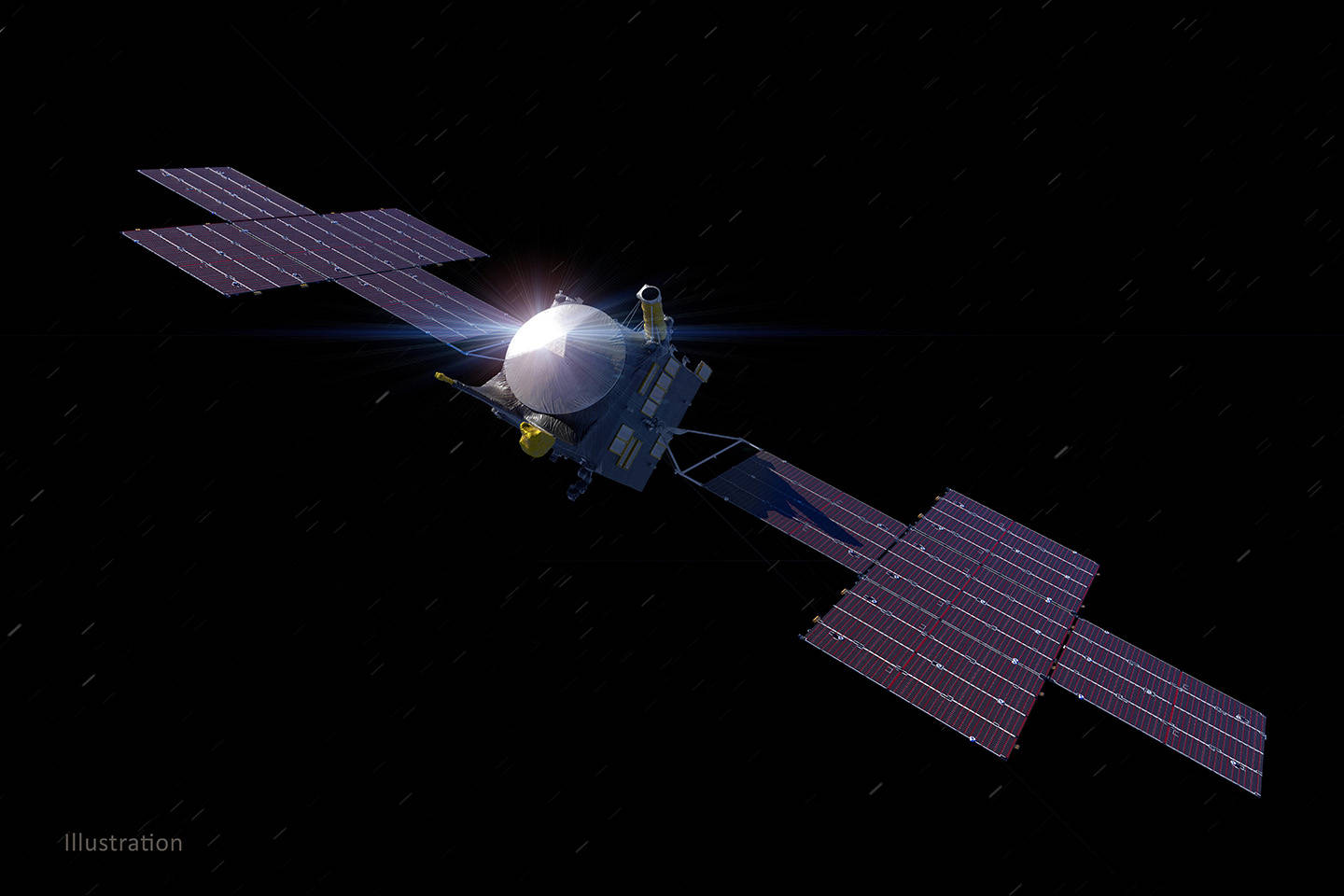In the first mission of its kind, the Psyche spacecraft will head to the metal-rich asteroid of the same name. The spacecraft launched on Friday, Oct. 13, from Launch Pad 39A at NASA’s Kennedy Space Center in Florida aboard a SpaceX Falcon Heavy rocket.
To get to the asteroid Psyche, spacecraft Psyche will journey 2.2 billion miles over a nearly six-year period. This trip will include flying relatively close to Mars in 2026 for a gravity assist, during which Psyche will harness Mars’ gravity, increasing speed and changing direction without using much propellant.
Psyche will reach its namesake in August 2029 and continue orbiting and studying the asteroid’s properties for at least 26 months, coming within 47 miles of the asteroid’s surface. According to NASA, the purpose of the mission to the asteroid is to determine if Psyche is an exposed core of planetesimal, an early planetary building block, which could offer a close look at the interior of terrestrial planets like Earth.
General Dynamics Mission Systems’ Contributions to Psyche
General Dynamics engineers in Scottsdale, Arizona, played an important role, supplying the spacecraft with two of our Small Deep Space Transponders (SDSTs), which will provide the redundant critical communications link between Earth and Psyche during the mission. This continues the company’s legacy of providing SDSTs (pictured right) on missions to every planet in our solar system, comets, asteroids and beyond. It also continues our close relationship with the Jet Propulsion Lab (JPL) as a key provider of space flight hardware.
“We are extremely proud of our team and the critical role the SDSTs are playing in this fascinating mission to Psyche,” says Chris Keeler, director of the Space Avionics & Payloads Systems business area, which delivered the SDSTs. “The legacy SDST has provided us with both inspiring images and irreplaceable data of our solar system, and we continue to support our partners in JPL and NASA as we look to future deep space missions.”





